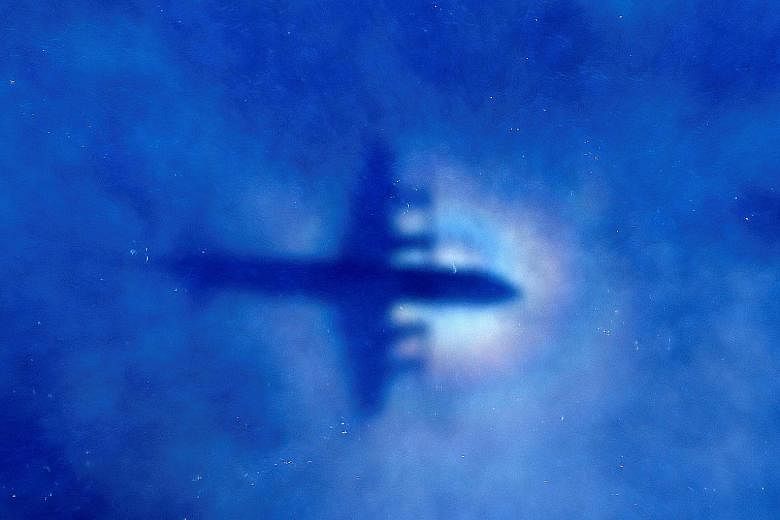The hunt for the missing Malaysia Airlines MH370 aircraft has taken a further twist, with new analysis claiming the Boeing 777 could be immediately to the north of the current search zone.
As the A$180 million (S$183 million) underwater search in the Indian Ocean draws to a close, families of the missing 239 passengers and crew have urged the Malaysian, Chinese and Australian governments to continue the search beyond the targeted 120,000 sq km zone.
If the search did continue, new analysis by oceanographers at the University of Western Australia (UWA) suggests it should be conducted further north.
The analysis, based on ocean currents in the Indian Ocean in the past two years, tracked the origins of a piece of the plane - a flaperon, or wing part - which was discovered in July last year on Reunion Island, east of the African mainland.
UWA Professor Charitha Pattiaratchi told The Straits Times that ocean currents in the region since March 8, 2014 - when the plane went missing - suggested the debris originated "slightly north" of the current search zone.
Prof Pattiaratchi said debris that has washed up on Reunion and elsewhere in southern Africa was "completely consistent" with the assumption that the plane went down while travelling along a route - the so-called "seventh arc" - above the Indian Ocean.
"But if the plane was at the southern end of the seventh arc, the flaperon would not have got as far as Reunion," he said. "If it originated from the northern end, it would have got there three to four months earlier."
The UWA's new oceanography analysis echoes findings released last week by scientists in Italy who examined ocean currents and winds and found the most likely search zone overlapped with the current zone but extended about 500km to the north.
"If nothing is found in the current search area, it may be worth extending the search in this direction," said Dr Eric Jansen, a researcher at the Euro-Mediterranean Centre on Climate Change in Lecce, Italy.
Some analysts believe the search should have assumed the plane was deliberately glided to the sea after running out of fuel, rather than assuming the flight ended unpiloted. Such an assumption would have meant the aircraft landed south of the current search zone.
But the recent studies tend to discount this "gliding" theory, suggesting the plane crashed further north.
Aviation expert Neil Hansford, from Strategic Aviation Solutions in Nelson Bay, Australia, said he believed the search had focused on the correct area and had been competently handled. But he warned against continuing the search, saying it would be costly and was unlikely to recover bodies of passengers or the black box recorders.
"We are talking about one of the most hostile parts of the oceans in the world," he told The Straits Times. "There is no doubt the plane is where they have looked - in the Indian Ocean. All the evidence is that is where it is."
But he added: "If nothing is found, the money needs to stop."
Prof Pattiaratchi agreed that a recovery operation in the underwater conditions of the southern Indian Ocean would be extremely difficult. "I don't know what would happen if they actually found the crash site at a depth of 4,000m," he said.
"Maybe the search should be suspended. In four or five years, maybe better techniques will be available to map the bottom of the ocean."
The disappearance of MH370 during a routine flight from Kuala Lumpur to Beijing sparked one of the most complex searches in aviation history, so far trawling more than 110,000 sq km - or 92 per cent - of the targeted zone off the south-east coast of Australia.

